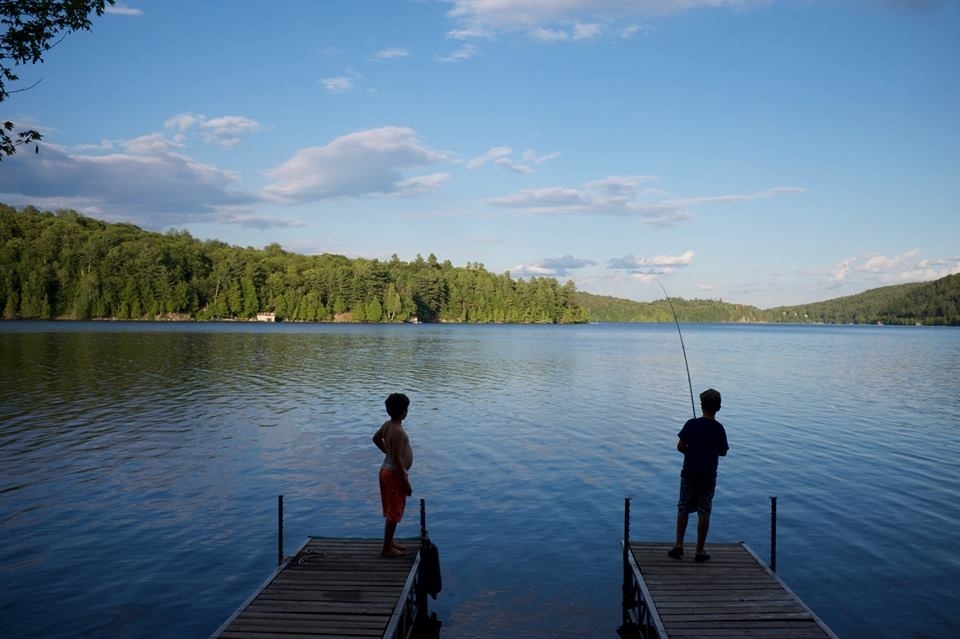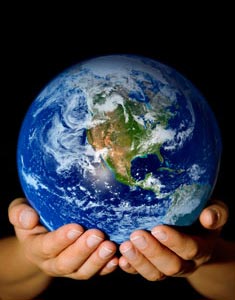
My writings - and those of others.
Playing with Words
As I wait for the final results of COP 26, I have to find something else to write about to end the week. I am taking a course online and the subject yesterday was “Interiority” - not a word that I ever use. That sent me on a search which I posted on the course site - and I’ll share something of it here:
I'm going to have some fun with words. I became curious about the term, "interiority", because before starting the course - or perhaps before reading Thomas Berry - it was not part of my everyday vocabulary. Canadians, like me, straddle both British and American English. I started with the hard copy of my Concise Oxford Dictionary published in 1982. The word wasn't there. I moved on to Collins British dictionary online to find this: "the quality of being focused on one's inner life and identity". If the Oxford English Dictionary had allowed me to see when the word first entered the language, I would have gone there, but there is a paywall. Collins did help with a diagram. It showed brief use for the first time in 1778 - 0.07% - and then the word languished or fell off completely until 1978 when it took off at 0.33% use. But that’s not a very big number either.
I moved on to the American Merriam-Webster. It had this to say: Definition of interiority
1: interior quality or character
2: inner life or substance : psychological existence
When we are little kids, using big words gives us a sense of authority and superiority - and it also makes us part of an in-group. For me, one of the challenges of Berry’s New Story - is telling it in words that other people understand. "Story" is a simpler word. For more fun, I went back to Collins and tried translating story into French, German and Italian. In each case it brings up a native word in the language histoire, Geschichte, storia. When I tried the same thing with Interiority, this is what came up - intériorité, Innerlichkeit, Interiorità. The German seemed to have a better word of their own. The others sounded as though they adopted the English one.
When we watched Robin Wall Kimmerer this week, several in the course commented on her warmth and simplicity as it comes through in the sound of her voice and her demeanor. It's isn't as though she can't use big words when she chooses to. I've just finished two of her books, Gathering Moss and Braiding Sweetgrass. Her naming of mosses reveals a scholar who can joust with any biologist and win hands down. For me, interiority has a cold and rather scientific sound - like an empty and sparsely furnished room. But this playful research brought a phrase that I can work with - "inner life" - because it sounds as though it comes from the wisdom of the heart. It still combines an adjective and a noun. To spur myself and others to act, I have to turn a phrase into a verb. The video for this section of the course on the global brain with the outline of the human body is also a big help in showing us what it means to live - both inside and outside our skins.
A good teacher once heard a student say, "I feel very creative". The teacher asked "So what are you going to create?" "Oh I didn't mean that I was going to do anything about it. It's just how I feel today".
That's why I never use the word "creativity" either. But "create" is a verb I like.
Inspiration
Here are poems for a rainy day:
WHEN I AM AMONG THE TREES
by Mary OliverWhen I am among the trees,
especially the willows and the honey locust,
equally the beech, the oaks and the pines,
they give off such hints of gladness.
I would almost say that they save me, and daily.
I am so distant from the hope of myself,
in which I have goodness, and discernment,
and never hurry through the world
but walk slowly, and bow often.
Around me the trees stir in their leaves
and call out, “Stay awhile.”
The light flows from their branches.
And they call again, “It’s simple,” they say,
“and you too have come
into the world to do this, to go easy, to be filled
with light, and to shine.”KINSHIP
by Ursula K. Le GuinVery slowly burning, the big forest tree
stands in the slight hollow of the snow
melted around it by the mild, long
heat of its being and its will to be
root, trunk, branch, leaf, and know
earth dark, sun light, wind touch, bird song.Rootless and restless and warmblooded, we
blaze in the flare that blinds us to that slow,
tall, fraternal fire of life as strong
now as in the seedling two centuries ago.
Bad Thinking
I spent an hour on Labour Day attending a webinar presented by The Philosopher, entitled When Bad Thinking Happens to Good People. It was good enough to download Steven Nadler’s Book by the same name. It was a bit less easy to access a philosopher in Plato or Aristotle’s Day but this one came in an instant and was a quick read.
The writer is concerned about current American Thinking - or perhaps the lack of it, which he finds not only perplexing but even dangerous with epidemic proportions. Beliefs like denial of climate change as a hoax, conspiracy theories and a election fraud can’t be blamed just on lack of education - though poor education is a factor. A recent survey revealed that a third did not know that Auschwitz was a concentration camp and about the same number can’t name a single branch of the US government. Yet many who promote these ideas are highly educated from some of America’s best universities. By many criteria, they are good people. But the author believes they have a character flaw - stubbornness. They fail to tailor what they believe to evidence. They hold false beliefs and doing so has consequences/
What can be done about it? If they think badly, the solution is to learn to think well. There are in fact standards of how to think that have come down to us through - no surprise here - philosophy! It relates to knowing how to know. That comes from knowing one’s self - and knowing what one knows and doesn’t know - evaluating the truth of one’s beliefs.
Bad thinking involves refusal to change one’s beliefs in the face of evidence and instead relying on prejudice, hearsay and emotions like hope and fear. Many are averse to science and its methodologies. Some wrong beliefs - like a flat earth - might seem logical when you look at the horizon and holding such a belief is unlikely to cause harm to others. Other wrong beliefs - like thinking the election was stolen - lead to insurrection.
The lecture took me back to first year philosophy and a reminder that logic patterns have rules. It contended that more often than not, the faults in wrong thinking relate to illogical premises and these need to be questioned. The other common one in bad thinking is paying attention to small samples of evidence. Unfortunately even the best media often publish reports of studies with small samples, which bring on hope and fear rather than reasoned response. Retraction of bad studies don’t get the same press. In our own time press coverage of conspiracies enhance their reach.
We may not have time to go back to philosophy class - but the book does present some ways to counter bad thinking. Some beliefs may give us comfort whether we have any proof of them or not and this doesn’t present a danger to others. It’s when beliefs lead to behaviour that harms others where we have to pay attention. And there are plenty of those beliefs currently around us.
When we are arrogant
Any faith that thinks it has the total answer and must impose it on others is dangerous when it uses domination. For the record, here is a thanksgiving offering from First Nations People that North American Christians thought were heathen, called them savages and tried to destroy their thousands of years of faith. In a time of climate crisis. this teaching is precisely what we now need to recover and learn:
Haudenosaunee Thanksgiving Address
This Thanksgiving address was used by the six nations of the Haudenosaunee (Iroquois) to open and close major gatherings or meetings. The prayer was also sometimes used individually at the beginning or end of the day..
The People
Today we have gathered and we see that the cycles of life continue. We have been given the duty to live in balance and harmony with each other and all living things. So now, we bring our minds together as one as we give greetings and thanks to each other as people.
Now our minds are one.
The Earth Mother
We are all thankful to our Mother, the Earth, for she gives us all that we need for life. She supports our feet as we walk about upon her. It gives us joy that she continues to care for us as she has from the beginning of time. To our mother, we send greetings and thanks.
Now our minds are one.
The Waters
We give thanks to all the waters of the world for quenching our thirst and providing us with strength. Water is life. We know its power in many forms- waterfalls and rain, mists and streams, rivers and oceans. With one mind, we send greetings and thanks to the spirit of Water.
Now our minds are one.
The Fish
We turn our minds to the all the Fish life in the water. They were instructed to cleanse and purify the water. They also give themselves to us as food. We are grateful that we can still find pure water. So, we turn now to the Fish and send our greetings and thanks.
Now our minds are one.
The Plants
Now we turn toward the vast fields of Plant life. As far as the eye can see, the Plants grow, working many wonders. They sustain many life forms. With our minds gathered together, we give thanks and look forward to seeing Plant life for many generations to come.
Now our minds are one.
The Food Plants
With one mind, we turn to honor and thank all the Food Plants we harvest from the garden. Since the beginning of time, the grains, vegetables, beans and berries have helped the people survive. Many other living things draw strength from them too. We gather all the Plant Foods together as one and send them a greeting of thanks.
Now our minds are one.
The Medicine Herbs
Now we turn to all the Medicine herbs of the world. From the beginning they were instructed to take away sickness. They are always waiting and ready to heal us. We are happy there are still among us those special few who remember how to use these plants for healing. With one mind, we send greetings and thanks to the Medicines and to the keepers of the Medicines.
Now our minds are one.
The Animals
We gather our minds together to send greetings and thanks to all the Animal life in the world. They have many things to teach us as people. We are honored by them when they give up their lives so we may use their bodies as food for our people. We see them near our homes and in the deep forests. We are glad they are still here and we hope that it will always be so.
Now our minds are one.
The Trees
We now turn our thoughts to the Trees. The Earth has many families of Trees who have their own instructions and uses. Some provide us with shelter and shade, others with fruit, beauty and other useful things. Many people of the world use a Tree as a symbol of peace and strength. With one mind, we greet and thank the Tree life.
Now our minds are one.
The Birds
We put our minds together as one and thank all the Birds who move and fly about over our heads. The Creator gave them beautiful songs. Each day they remind us to enjoy and appreciate life. The Eagle was chosen to be their leader. To all the Birds-from the smallest to the largest-we send our joyful greetings and thanks.
Now our minds are one.
The Four Winds
We are all thankful to the powers we know as the Four Winds. We hear their voices in the moving air as they refresh us and purify the air we breathe. They help us to bring the change of seasons. From the four directions they come, bringing us messages and giving us strength. With one mind, we send our greetings and thanks to the Four Winds.
Now our minds are one.
Closing Words
We have now arrived at the place where we end our words. Of all the things we have named, it was not our intention to leave anything out. If something was forgotten, we leave it to each individual to send such greetings and thanks in their own way.
Now our minds are one.
Thanksgiving Address: Greetings to the Natural World English version: John Stokes and Kanawahienton (David Benedict, Turtle Clan/Mohawk) Mohawk version: Rokwaho (Dan Thompson, Wolf Clan/Mohawk) Original inspiration: Tekaronianekon (Jake Swamp, Wolf Clan/Mohawk).
Available through the Smithsonian National Museum of the American Indian.
Removing Alienation
While researching a different subject, I came across this quotation from Thomas Berry. It relates to what we have to learn from our First Nations brothers and sisters:
“Religion, we must remember, is born out of a sense of wonder and awe of the majesty and fearsomeness of the universe itself. . . . At present we are completely encompassed by the world of human artifice.
The alienation from the natural world deprives us of the immediacy and intimacy with the natural world that we observe in indigenous peoples the world over. In their immediacy with the natural wonders of the world about them, these people have an intimate relationship to the sacred as manifest throughout the planet. The world is attractive yet threatening, benign yet fearsome. Divine powers enable fruits, berries, nuts and vegetation to come forth. These same powers bring the monsoon rains and the withering desert winds, the arctic chill, temperate warmth and tropical heat. These experiences evoke in the human soul a sense of mystery and admiration, veneration and worship. This is beyond what is sometimes called nature worship.”
- The Sacred Universe, p. 82
We need to relearn to to encounter nature as a subject to be respected not an object to be exploited. In spite of all we have done to hamper indigenous teachings, they have remained and are being taught to new generations who will honor them.






